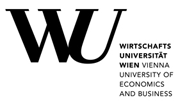Department of Economics Working Papers,
Vienna University of Economics and Business, Department of Economics
No 370: Climate change and automation: the emission effects of robot adoption
Ana Abeliansky (), Klaus Prettner () and Ernesto Rodríguez Crespo ()
Additional contact information
Ana Abeliansky: Austrian National Bank (OeNB)
Klaus Prettner: Department of Economics, Vienna University of Economics and Business
Ernesto Rodríguez Crespo: Department of Economic Structure and Development Economics, Universidad Autónoma de Madrid
Abstract: What are the environmental impacts of the increasing use of automation technologies? To answer this question, we propose a model of production in the age of automation that incorporates emission externalities. We derive a threshold condition subject to which the use of industrial robots affects emissions. This model leads to three testable predictions, i) the use of industrial robots causes higher emissions on average, ii) with increasing efficiency of industrial robots, the effect becomes weaker and could turn negative, and iii) in countries in which electricity is predominantly produced using (clean) renewable energy, industrial robot use has the potential of decreasing emissions. Empirically, we find support for the theoretical hypotheses implying that the effect of automation on emissions is non-linear or moderated by other variables.
Keywords: Automation, Robots, Emissions, Climate Change
JEL-codes: O11; O33; O44; Q54; Q55; Q56 October 2024
Note: PDF Document
Full text files
WP370.pdf
Report problems with accessing this service to Sune Karlsson ().
RePEc:wiw:wiwwuw:wuwp370This page generated on 2025-09-20 04:36:37.

